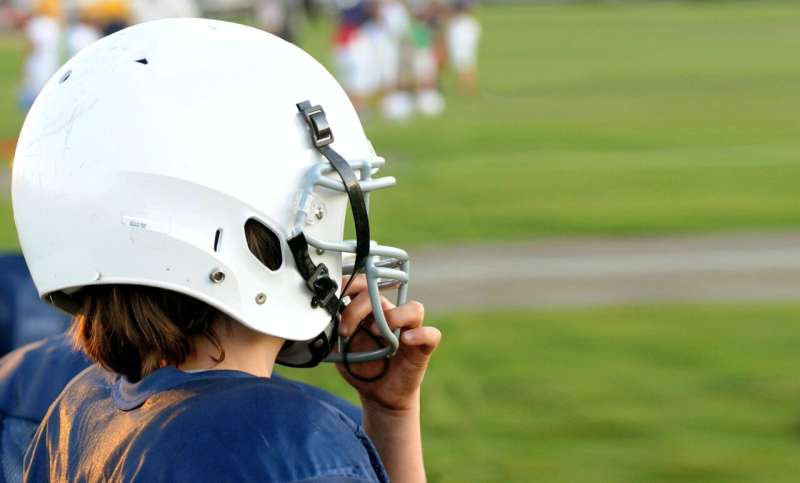This article has been reviewed according to Science X's editorial process and policies. Editors have highlighted the following attributes while ensuring the content's credibility:
fact-checked
trusted source
proofread
Natural grass may pose greater risk for football concussions than artificial turf

Young football players who sustained a head-to-ground concussion practicing or playing games on natural grass experienced more symptoms—and significantly higher severity—than those who suffered concussions on artificial turf, researchers at UT Southwestern Medical Center found.
The study, published in the Clinical Journal of Sport Medicine, is the first to investigate symptoms among young football athletes injured from helmet impact on different playing surfaces, according to lead author C. Munro Cullum, Ph.D., Professor of Psychiatry, Neurological Surgery, and Neurology and an Investigator in the Peter O'Donnell Jr. Brain Institute at UT Southwestern.
Athletes who sustained a concussion on grass reported 10.3 symptoms (mean level), compared with 5.9 for those injured on artificial turf, and a mean symptom severity score of 26.6 versus 11.6.
"Many natural grass fields, especially at the youth level, may not be well maintained and can be harder and less forgiving than modern artificial turf, which has evolved significantly from the old, hard fields of the past," Dr. Cullum said. "Today, many artificial fields use long synthetic fibers installed with infill over a shock-absorbing pad, all of which can help minimize the impact of a head-to-turf hit."
Study participants, most of whom were in middle school or high school, were selected from the North Texas Concussion Registry, a multi-institutional collaboration of specialty concussion clinics. All 62 participants were 10- to 24-year-old males who sustained a helmet-to-ground concussion practicing or playing competitive football and went to a specialty concussion clinic within 14 days of injury.
Of the group, 33 were injured on natural grass and 29 on artificial turf. Data were collected through self-reported questionnaires in clinical settings, and most of the participants were treated at Children's Medical Center Dallas and Scottish Rite for Children.
In addition to the reported differences in the number and severity of symptoms, researchers found seven major symptoms more likely to be present after a concussion on grass: dizziness; blurred vision; sensitivity to noise; feeling in a fog; difficulty remembering; fatigue or low energy; and confusion.
"Several studies have shown lower rates of football-related concussion on artificial turf versus grass, but our study also suggests that concussions on natural surfaces are more likely to be worse and may require longer recovery times," said Dr. Cullum, who serves as Vice Chair and Chief of the Division of Psychology in the Department of Psychiatry. "Clinicians should be aware of these differences and consider playing surface as a factor in concussion evaluations."
Because the study's sample size was relatively small and researchers had no data on the conditions of the fields where injuries occurred, the findings are preliminary and more research is needed to investigate the connection between playing surface and concussion severity, Dr. Cullum said.
"Despite advancements in rules and equipment, concussions remain a serious issue in football and other youth sports," he said. "Young athletes can experience physical, cognitive, and/or emotional symptoms that may linger after the injury, though the majority recover within a few days or weeks.
"Identifying those who may be at risk for lingering symptoms is one of our research goals. Having more data about the role field surface plays in concussion severity would be a valuable addition to our clinical knowledge."
More information: Morgan Michelle Heinzelmann et al, Impact of Playing Surface on Concussion Symptoms in Young American Football Players, Clinical Journal of Sport Medicine (2023). DOI: 10.1097/JSM.0000000000001204




















